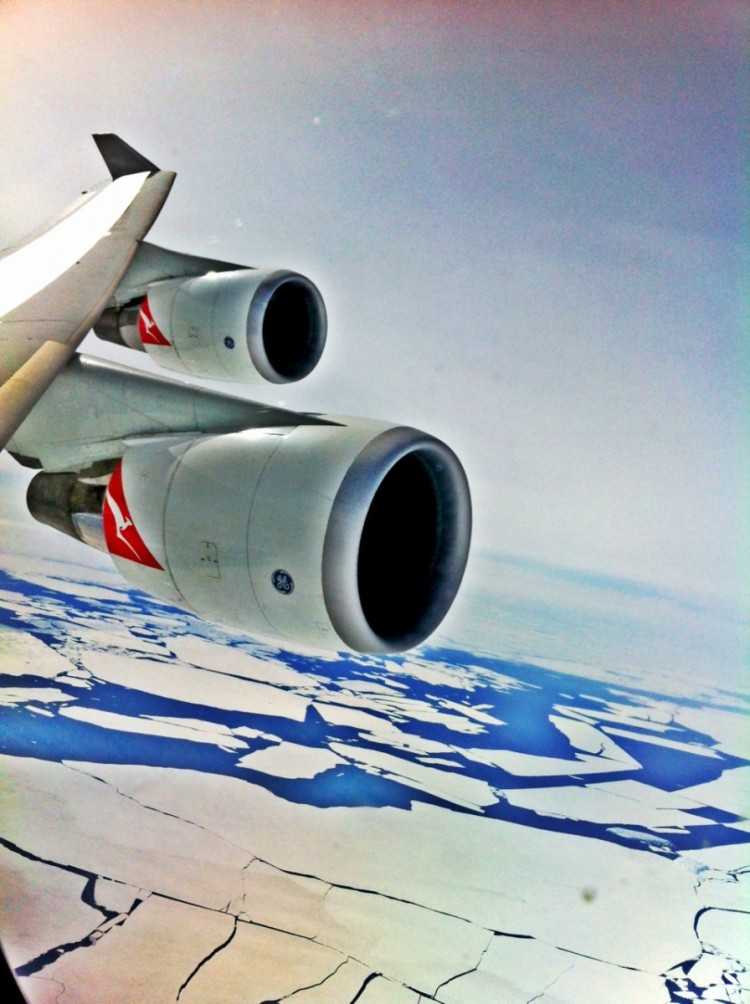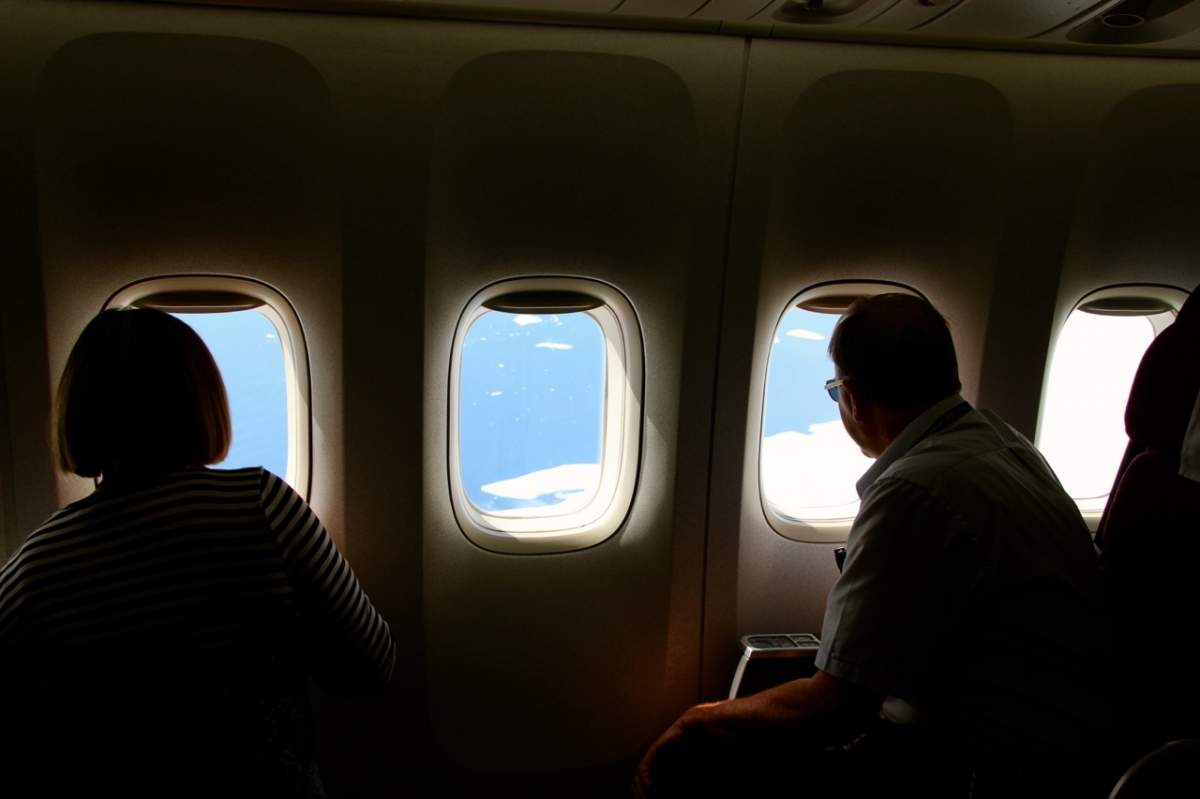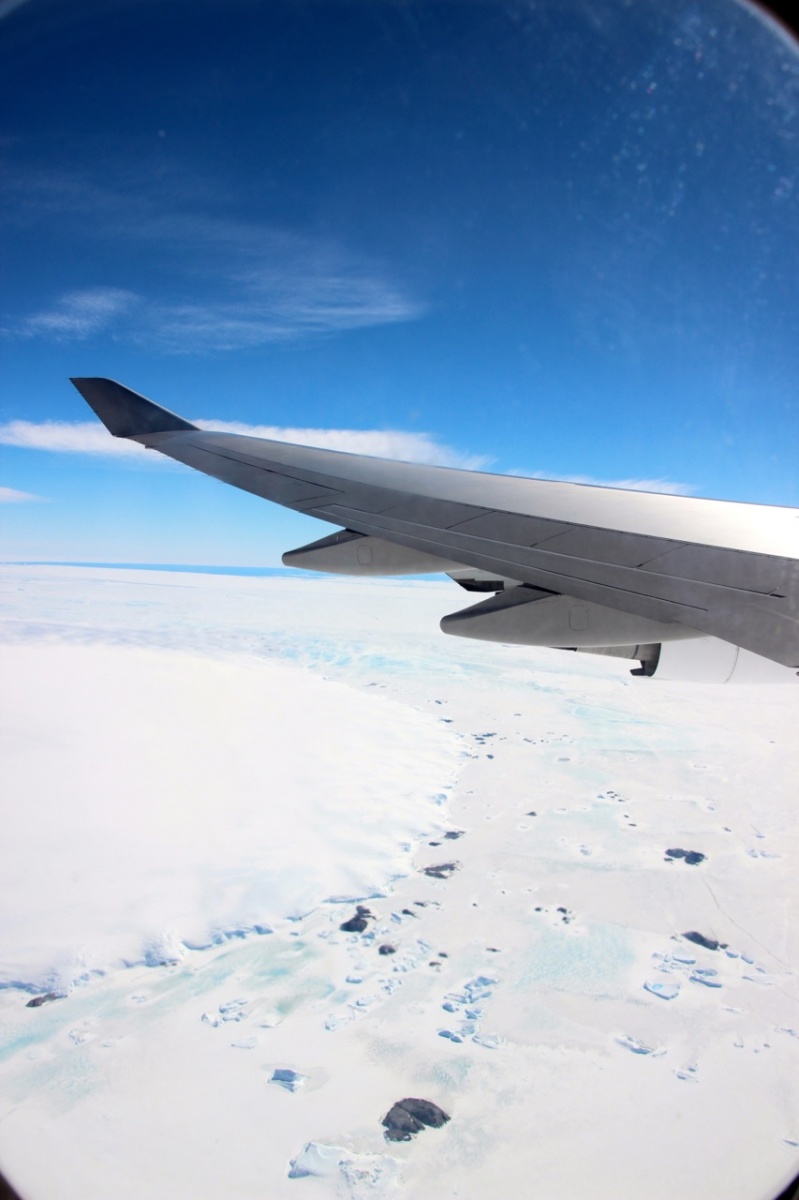“This is one of the best things I’ve done in my life.” Considering all of the experiences I’ve managed to have so far, this is a pretty big call to make. And yet I find myself thinking it over and over again as I look down on the frozen beauty of Antarctica.
Having flown from Adelaide we had around three hours of ocean and clouds outside our window before we saw the first ice, but far from being dull, this only added to the anticipation.
Antarctica Flights had chartered a Qantas 747-400, and this was the first time I’d been on a jumbo jet where everyone was there for the same reason. Usually on a flight you have a mix of people going on holiday, returning home, travelling for business or pleasure, or endless other reasons. Here I’m surrounded by a planeload of people like myself, off to fulfill a dream of seeing the white continent.
And when we do see it, it’s just as magical as I’d dreamed it would be. I happened to be looking out the window at the moment when the white of the occasional fluffy cloud was replaced with a different kind of white. The cabin on the plane was warm, but I got goose bumps when I realised I was looking at the ice for the first time and managed to muffle a squeal of excitement.
For the next few hours I’m in awe. I’m fascinated by the patterns in the ice, and the colours. Sure, they’re mostly variations on blue and white, but oh, the intense turquoise of the shallow water against the ice, the contrast with the rich deep blues of the ocean, the unexpected textures and shadows in the ice. It’s all so breathtakingly beautiful.
Our captain, Ossie Miller, slows the plane down so we can really soak it all in, and does figure eights over some landmarks so people on both sides have the chance to see it.
We may be flying at 10,000 feet but as there’s no pollution in the air everything is crystal clear and appears closer. It can be dazzlingly white at times, so sunglasses are a must, and allow you to see more of the subtleties below.
While we’re too high to see wildlife we do manage to see signs of human life: the colourful buildings in the French Antarctic base Dumont d’Urville are easy to spot from the air, and our flight is also lucky enough to be able to spot Mawson’s Hut.
I’m told this is only the second or third time Mawson’s Hut has been spotted on a flight out of Adelaide, so it’s a pretty big deal. Mind you, I probably shouldn’t admit that I wasn’t particularly sure if I was looking at the hut or at a large rock until I looked at the photos and could tell which was which afterwards. But for those who could focus on the right spot it was a moment to remember.
For me, the most special moment of all is when we reach the magnetic South Pole and see an absolutely stunning iceberg. I can’t believe I’m looking at something so beautiful in such a special spot, and I know I’ll remember this one for the rest of my life.
Seating Arrangements on Antarctica Flights
Antarctica Flights is celebrating its 20th anniversary this year, and since they first started flying in 1994 they’ve flown more than 40,000 people over the ice.
They’ve regularly flown from Melbourne, Sydney, Adelaide and Perth and this year they’re doing a direct flight out of Brisbane for the first time, and will be taking their popular New Year’s Eve flight directly out of Sydney.
Before I travelled with them the question I was asked the most was “how do people sitting in the middle see anything?” It’s a good question, and one I was asking too as I wasn’t sure where I’d be sitting.
The seating arrangements work like this:
Everyone, except those in the centre seats in economy and business, is given two boarding passes. At the half way point over the ice there’s an announcement to swap seats, and those passengers sitting next to the window change over with those who have been on the aisle.
As there are only two seats beside the window in business and first (or Ice Class as they call it up there) those people will each be sat beside the window for half of the Antarctica time. As the swap in economy involves four people switching over, you’ll either be beside the window, or the person next to that seat.
The only people who don’t rotate are those in the centre of economy and business, and it was these seats I was a little worried about.
Before the flight I spoke to Antarctica Flights General Manager Bas Bosschieter to understand the system better. And he explained there’s a special kind of camaraderie on these flights.
“We see it all the time. People with window seats get up and say “I’ve taken some photos, would you like to get in and have a look?” With Antarctica being a very cold environment there’s absolutely no turbulence. So we encourage people to move around.
“It’s quite overwhelming, and it’s all around you. Every window you look out has a new view. So people do tend to move around, let people take photos over their shoulders, even give up their seats for them.”
On the day I’m lucky enough to find myself in a business class centre seat, which means there’s a lot of room to move around, and a generous person to window ratio. But a few times throughout the flight I go to see how things are travelling in economy, and am pleasantly surprised.
Just as Bas predicted, people are smiling and laughing, sharing windows and having a great time. I chat to some people in the middle seats over the wing to see how they’re feeling and they say they’ve been able to see enough and they’re happy.
While the flight may have technically been from Adelaide to Adelaide, the service was as it would be on an international Qantas flight, which meant full meals, snacks over the ice and complimentary drinks including alcohol.
Prices vary considerably depending on which class you’re in, and also whether you’re in a centre or window seat, ranging from $1,199 for the Centre Economy and going up to $7,499 for Ice or First Class (as at January 2014). My centre Business Class seat was $3,999 compared to the window Business Class at $6,999, and I was able to eat all the same delicious food, sip the same champagne (over ice!) and with so many windows and generous people sharing their views, could gaze upon Antarctica for hours. Now that’s ticking off a bucket list item in style.
Flying to and from Antarctica
One of the many things I was impressed by was how much fun it was just getting to the ice and back. And I don’t just mean watching Happy Feet.
As we flew down we heard stories from people who had spent time living and working in Antarctica, and even had a live cross down to the ice. Second Officer Victoria Lowen put in a satellite phone call to Michael at the Davis Base, and as the call was played over the plane’s PA system she got to ask “how’s the weather down there” and we discover they’ve had a heat wave with temperatures hitting 4 degrees. Balmy!
As Michael told us how some of the Aussies at the base were planning an Australia Day swim in the icy Antarctic waters, I thought how one day I would love to be down there on the ice with them. Watching, not swimming that is. And how this flight was the perfect introduction to this part of the world.
It’s a view shared by a man who should know. Professor Ian Allison is a glaciologist who first went to Antarctica 46 years ago and has spent many years on the ice. He’s the perfect man to do the commentary on the flight, and even has a glacier named after him (the Allison Glacier on Heard Island that is).
When I tell Ian how I’d love to see Antarctica from the ground as well he tells me I’m doing it the right way around; that it’s best to see it from above, to understand the scale of it, and then to go by boat. He’s fascinating to talk to, and when I ask about how things have changed over the years he says the biggest difference now is communication.
While today’s Antarctic visitors can keep in touch with loved ones by phone, email, or tweet about their adventures, in Ian’s day they had to rely on Morse code and telex. I think my jaw dropped when he explained that they were limited to 175 words per person each month. That’s sent AND received. 175 words. Talk about choosing your words carefully and hoping the other person doesn’t say too much in response.
Environmental Impact of Antarctica Flights
When I was a young girl I was firmly of the belief that no one should ever go to Antarctica because it was the only pristine place left on the planet.
In recent years I’ve been battling with that inner child and my burning desire to see Antarctica. And my decision to go for it and follow the dream wasn’t taken lightly.
Through my other life as a radio producer I recently had the chance to speak with the world’s greatest living explorer, Sir Ranulph Fiennes, and when he came on our show we asked the first man to make it to the South and North Poles by land what he thought of Antarctic tourism.
As he put it “everyone’s grandmother is climbing Mount Everest and going to Antarctica these days” and you can’t stop progress. Though he did point out that what people see on the coast by boat, and what you see when you walk a few kilometres out into the continent are extremely different things.
Whatever happens in the years to come, I do hope that tourism operators do their best to protect this special part of the world. When I ask Bas from Antarctica Flights about the environmental impact, he says that’s one thing they’re very conscious of.
As well as contributing to Green Power and Climate Friendly, Bas says one of the most important things about the flight is educating people.
“We work very closely with the Australian Antarctic division because while some people may consider this a joy flight that’s disturbing the environment, we do fly at a very safe altitude, at 10,000ft, or 2,000 feet above the highest point within 200 nautical miles.”
“I think we’re all working together to keep Antarctica as beautiful and as pristine as it is.” Bas explains, “There have been many countries that have talked about building resort style accommodation down there. We’re totally against that, and that’s another reason we operate the flights, because I’d say 99% of people who’ve been on our flights would be against it as well after seeing how beautiful it is down there.”
And with that, you can count me in the 99%.
Amanda Woods travelled as a guest of Antarctica Flights, but as usual all opinions are her own.
After first seeing it from the air, Amanda did fulfill her travel dream and go by ship. You can check out her review of One Ocean’s Antarctic Cruise and also see video of footage taken in Antarctica, including whales, penguins and incredible icebergs.









Wow, it looks stunning! So glad you got to tick another biggie off your bucket list. Great piece, great pics, and thanks for sharing your amazing experience with us. It would have been nice to share a bit of that champagne with us as well.
Thanks lovely! And I can just see us up there toasting the ice together. I think Antarctica just went back on my bucket list, with you in the mix 🙂
That is so interesting about the seating arrangements! It’s really nice that everyone shares the view too 😀 The photos are stunning!
Thanks lovely! It really was a magical one, and something I’ll never forget.
Great story. I never knew such a flight existed from Australia. It sounds great though. Its cool the way people move around too, I never would have thought of that.
I’m with you! I had heard of the flights in the past but wondered how it worked and how people got to see it out the window. And the vibe amongst everyone sharing windows was just lovely. I was travelling solo but it was such a great shared experience with new people.
Why didn’t I swap onto that flight? We would have had so much fun Miss Amanda … me serving the champagne over ice, you drinking it! If you go again, let me know and I’ll be there
Oh you have to make sure you do it! It’s an incredible experience and the flight attendants seemed to be loving it as much as the passengers. It really is a wonderful thing to do.
There are still valid questions as to what actually Antarctica “is”. It’s interesting to me that we don’t see tour companies interested in that question.
Hi Rick, I’m afraid I don’t understand your question. When I’ve travelled there, both on the flight and by ship, the companies have had experts travelling with us to talk about every aspect. Have you actually been and not had that experience? And what in your opinion “is” the Antarctica that they’re not sharing?